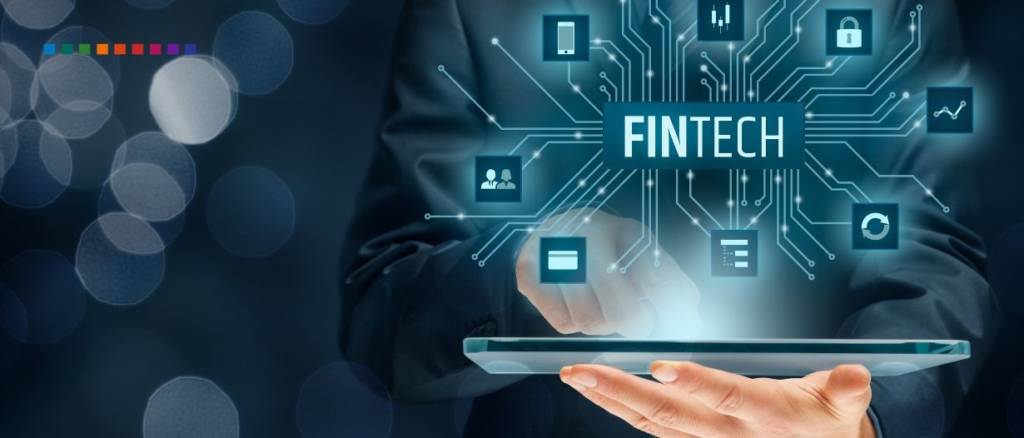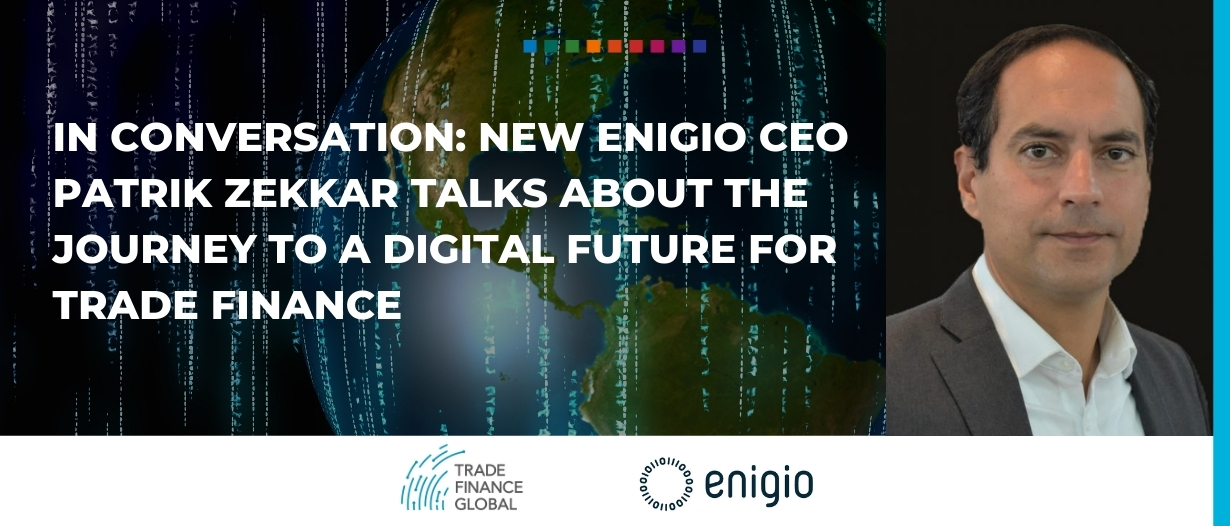In October this year, Patrik Zekkar was appointed as the new chief executive officer (CEO) of Enigio by the company’s board of directors.
Zekkar is bringing his experience from the banking sector to Enigio, having previously worked as head of trade finance and working capital management at Nordea.
He also has experience in scaling and growing businesses within the trade and supply chain technology area, and experience as a board member in commercial blockchain initiatives and industry-interest organisations.
Enigio sees Zekkar’s appointment as a key step in its aim to become the leading technology provider of the global standard for freely transferrable digital original documents.
This month, Trade Finance Global (TFG) Editor Deepesh Patel spoke with Zekkar to find out more about his journey to Enigio, his new role, and his outlook on digitalisation in trade and supply chain finance.
Journey to Enigio
What are the biggest inefficiencies/opportunities around trade finance processes and operations, based on your previous role?
I would like to start on another level than trade finance processes and operations, as all parties in trade are interconnected through the required documents, so each part in a supply chain has dependencies downstream – including, but not limited to, banks with the trade finance documents.
Without doubt the lack of digital creation at source, and interoperability between all parties in the supply chain, are the root cause of inefficiencies, and therefore by far the biggest opportunities.
Having been around and worked in several banks, I must say that much improvement has been made in the trade finance units over the years, and, therefore, continuing to improve business process management (BPM), ad hoc robotics, and similar efforts do not do the big trick anymore.
Real process and operation levers, for all parties in a supply chain, are made when addressing the end-to-end (e2e) trade digital business model. Hence, digital creation at source and interoperability.
What are the biggest pain points when it comes to trade digitalisation at the bank?
The documents, of course – this has been well known for ages – and the banks cannot change that themselves.
But, they can play a part and contribute to the required changes to address the root causes.
The documents in a trade transaction originating from banks, or banks’ customers on request by the bank, are within the banks’ control.
Such documents will have to be digitally created and delivered digitally downstream, not as paper, as is done today.
If each party in the chain took such responsibility, they should, in return, get major efficiency and security benefits.
It’s fully possible with the technology of today, and legislation is rapidly and firmly catching up, i.e., under the Model Law on Electronic Transferable Record (MLETR).
Leaving banking for tech
Why leave a good job at a major international trade bank for a job at a tech company?
When introduced to Enigio’s freely transferrable digital original document (trace:original), it actually took me a while to realise it’s a workable key component for digitalising the trade domain by addressing the paper, by being the digital paper 2.0.
With the ability to fully digitalise the original paper documents, which will carry any content, data structure or structures, and being machine-readable, there is no barrier to an e2e truly digital business model for every party throughout the entire supply chain.
We don’t need to change, re-build, or massively invest any further, irrespective of the type of claim document, transport document, or other documents.
I like tangible, real solutions to major real problems. This is really what this is about, and therefore, it was impossible for me not to be part of this change.
Some countries still need to adopt technology-neutrality for adoption of highly-regulated documents to be digital.
Thus, these types of documents are limited, and if that takes one year for some countries and five years for others, it’s negligible in the bigger picture.
We have been waiting for more than 200 years for this to finally happen, and it will also need time to be adopted across industries and across geographies.
Digital islands and holy grails
Do we have a digital island problem (too many platforms, too many siloes)?
Absolutely, and if we continue as-is, it will be a major blocker going forward.
The lack of network effects is the biggest single issue hampering the development and higher adoptability of platforms.
Thus, I don’t think there are too many, and it is important to remember that all the platform initiatives are the reason for reaching this far in industry developments.
I see no negatives here, rather the opposite. The platforms are part of an evolution, and now, in the next step, the focus needs to be on connecting the dots.
If we don’t manage to connect the dots then we have failures and waste, with siloes and potentially investments in vain.

Is standardisation the holy grail for trade digitalisation?
Let’s not believe that standards are all equal to one. We may have 36 different standards, and it is still standardisation, and that is what technology needs to be able to handle.
You can put as many formats as you like in an Enigio trace:original document, so each party in the supply chain may extract data in their preferred format automatically. That is interoperability.
The holy grail with standardisation is rules and regulations, if we want a global trade network.
Contractual agreements, which have governed the digitalisation initiatives so far, are limited to the parties signed on to them – law is applicable to everyone.
Due to the ongoing changes led by the G7+ countries, with impressive pace and support, to adjust laws in a structured way to enable a fully digitalised global trade network, it will happen.
Enigio, its friends, and its competitors
Looking at how digitalisation is evolving in the industry, how do you see Enigio’s role compared to the many platforms and closed ecosystems being rolled out?
Enigio is not a platform, but a utility solution that can be used by any platform and between platforms to solve the interoperability challenge.
Since you can add anything in the digital original document – data structure, terms and conditions, you name it – to complement or replace the shortcomings of platform and ecosystems, this enables cross-fertilisations between platforms and ecosystems.
Also, as Enigio´s freely transferrable digital original document, trace:original, is fully compliant with the demands of the MLETR and the International Chamber of Commerce Digital Standards Initiative (ICC DSI), it works both now and is fit for future.

How can other fintechs work together to ensure cooperation and collaboration rather than competition?
We have to cooperate and collaborate if we want to obtain the scale and thereby the return on investments required.
From a customer perspective, you don’t want to buy bits and pieces from various suppliers: you want a relevant package.
As Enigio provides a component we, for example, partner with workflow system providers to secure customers, and get the solution bundled with its workflow system as a package.
Silo approaches are narrow-minded and will not take anyone or the industry to the next level, and will not capture the market demand and potential.
The sharing of information is an important part of collaboration to ensure that we co-create and leverage on each other’s strengths, as well as being cost-efficient.
There are examples from other industries where it works, so I don’t see why it shouldn’t work in trade.
Legal and regulatory issues
Is the legal issue (around acceptance of digital documents) the biggest hindrance to trade digitalisation?
For non-negotiable trade documents – for example, guarantees or other contractual documentations – there are no known legal restrictions.
For negotiable trade documents – for example, bills of exchange and promissory notes – the governing law needs to be technologically neutral.
That’s what the UN’s MLETR is addressing, and what countries are adjusting towards.
Legislation in this field is as old as 150 years plus, and at that time it was not predicted that original documents would be digital in the future.
It is not the biggest hindrance, it’s a timeline thing, and it will be changed stepwise over the next coming years.
Some major trading nations are expecting to correct their law already in 2022, so I am more stressed that the trade industry will not move fast enough to be fit for the future.
Thus, the biggest hindrance right now is that important stakeholders like banks take a “wait-and-see” approach, due to being unsure about how this will play out after monitoring the respective platform developments and interoperability issues.
We hope to be able to support by giving comfort on the interoperability concerns.

Future plans at Enigio
What are the next steps in your new role at Enigio?
For Enigio, it’s about scaling-up the business in the focus areas in and around the trade supply chain, i.e. trade finance, transport and logistics, and certificates.
We need to keep a high activity level in our engagement with customers and stakeholders, and ensure that we contribute to making the industry future-proof.
The parties that do not leverage or comply with MLETR, ICC DSI, or similar measures will find themselves lagging, and that is not the situation you want to find yourself in.






























